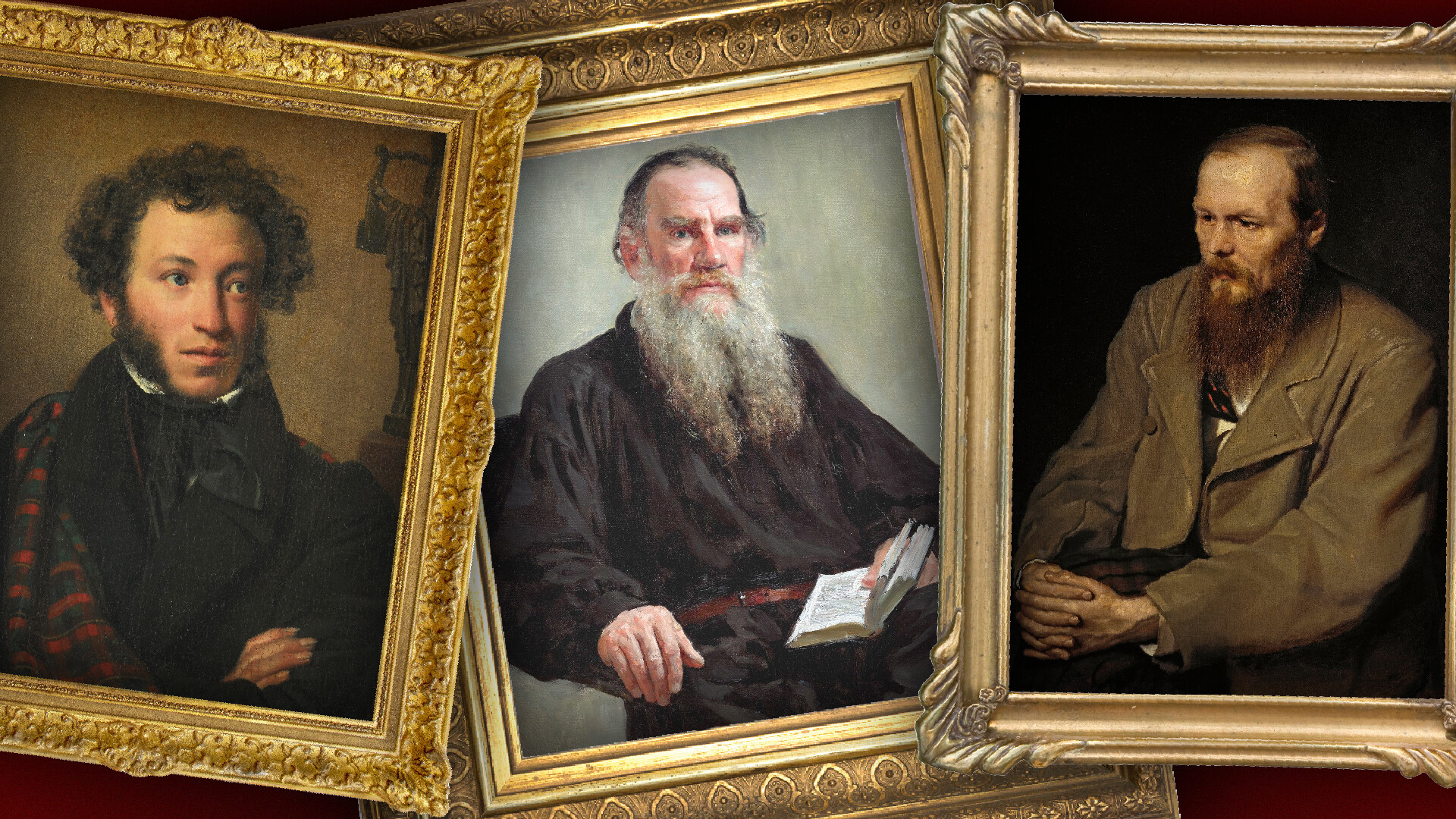
At Russia Beyond, we’ve already compiled a list of 112 Russian writers, ranking them from great to absolutely freaking great! But, what if we woke up at night and were asked who’d be in the top 10 most freaking great… Well, below is our attempt at this!.

Orest Kiprensky. Portrait of Alexander Pushkin, 1827
Tretyakov GalleryWe, Russians, used to say that Pushkin is our everything (and is praised and loved much more than anyone else). Having died aged at just 37 years of age, this genius managed to cover an enormous amount of topics, genres and forms. He was a brilliant poet, creating not only about 800 short poems about love, honor and a sense of life, but also 12 long, epic poems and one full novel in verse, ‘Eugene Onegin’. The latter is considered to be an encyclopedia of 19th century Russian life, due to the sheer amount of things Pushkin explained and depicted in detail in it (read more about it here.) And Pushkin used the unique original stanza with a strict order of rhymes and rhythms.
Moreover, Pushkin was a great prose writer and a playwright. His historical drama ‘Boris Godunov’ is an iconic piece which is still being staged as opera all over the world. While his novel ‘The Captain’s Daughter’ gave a sense of the 18th century provincial noble society, as well as about the Pugachev rebellion. It contains the phrase that became an aphorism: “God save us from seeing a Russian revolt, senseless and merciless” (Не приведи Бог видеть русский бунт – бессмысленный и беспощадный).
Read more on why Pushkin is so great here and find 10 must-read works by him here.
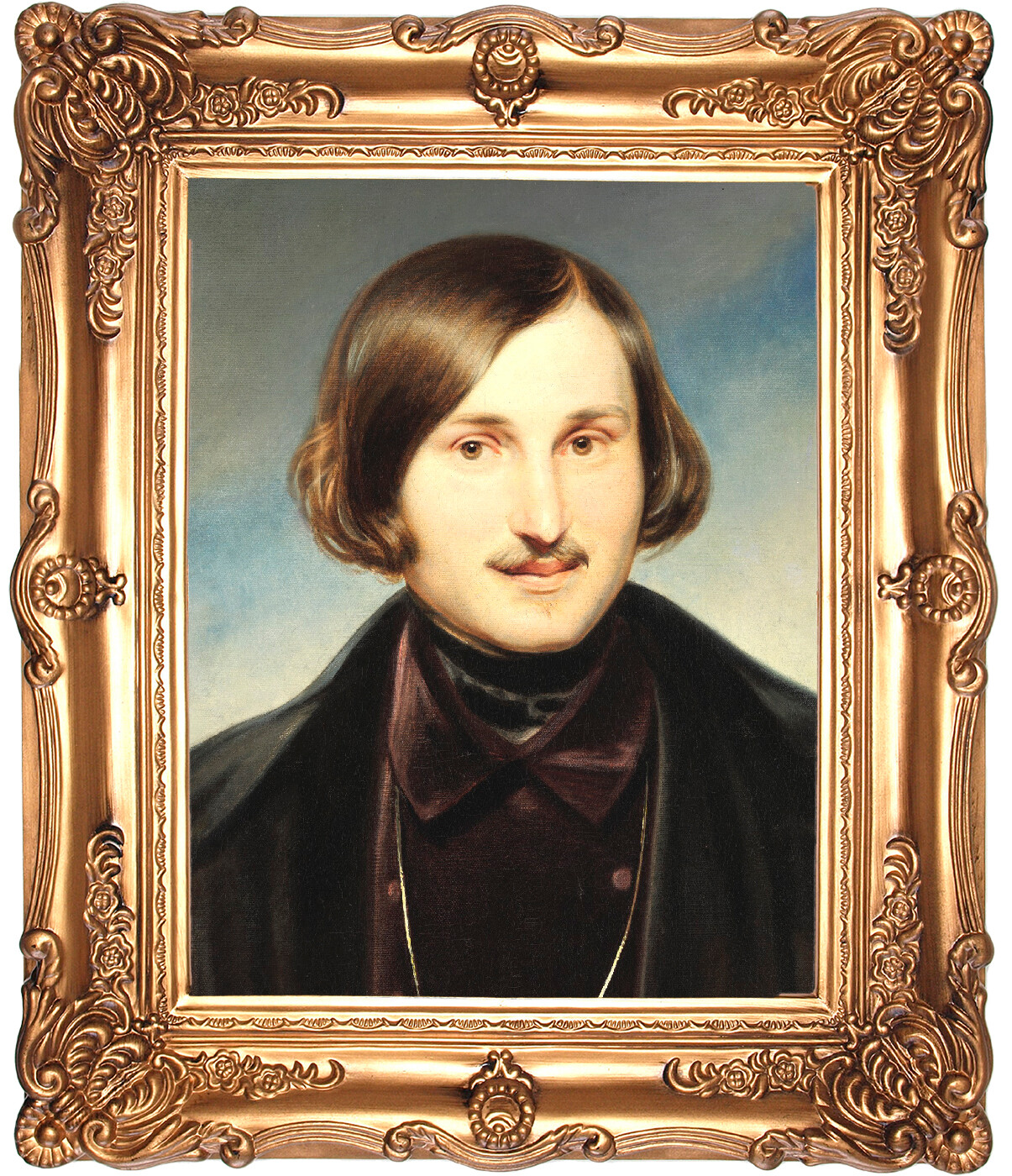
Fyodor Moller. Portrait of Nikolai Gogol, 1840s
Tretyakov GalleryThe first satiric and comedic writer, whose works are incredibly and paradoxically relevant even today. Gogol is an author of comedic plays that are still staged in theaters across the country.
One of the most famous is ‘The Government Inspector’ that depicts a provincial city where deeply corrupt officials find out that a capital’s inspector is going to visit and inspect their city incognito. But having gone crazy with anxiety, they treat the wrong guy like a St. Petersburg VIP official… Epic!
Probably the most widely known work by Gogol is his novel (which he himself defined as a poem in prose) ‘The Dead Souls’. This book is a kind of “Russian Odyssey” and an attempt to discover the mysterious Russian soul. A low-level official named Pavel Chichikov travels around a provincial city’s landowners asking them to sell him their serfs… that have already died… (Read the short summary of the book here).
Gogol imagined this book to be a trilogy, like ‘The Divine Comedy’ by Dante Alighieri. First volume refers to Inferno, second and third would refer to Purgatorio and Paradiso. However, having written half of the second volume, Gogol wasn’t happy with the result and burned it…
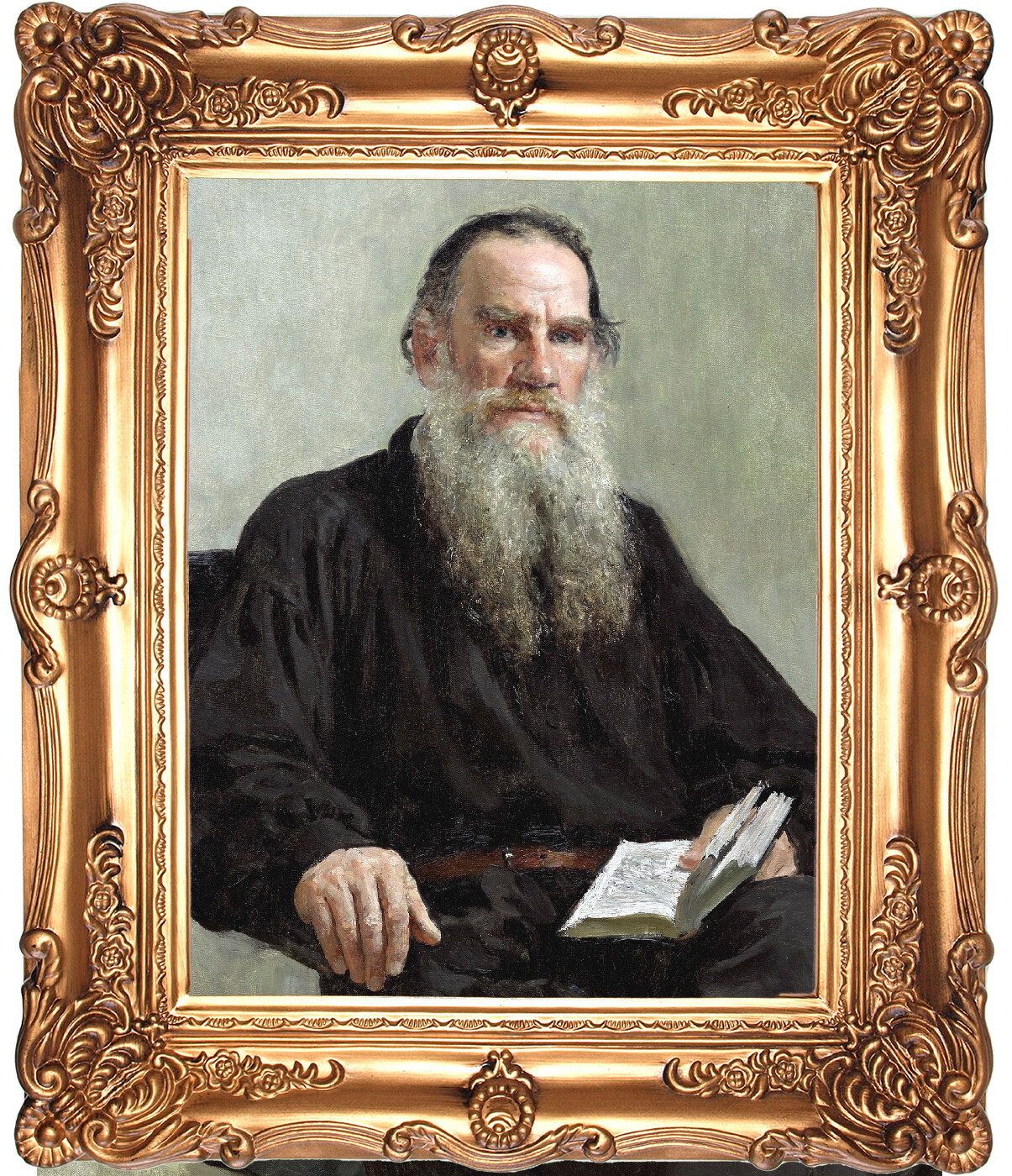
Ilya Repin. Portrait of Leo Tolstoy, 1887
Tretyakov GalleryThis author doesn’t need an additional introduction and is, probably, the most famous (and most prolific) Russian writer. His full collection of works consists of 90 volumes, everything that he wrote during his 82 years of life, including a huge diary and many letters he exchanged with a wide circle of friends.
Tolstoy’s biggest and most well known novels are, of course, ‘War and Peace,’ which depicts the life of Russia during its war with Napoleon in 1812, and ‘Anna Karenina,’ the tragedy of a woman who was not happy in her marriage.
However, Tolstoy himself considered his most great work the novel ‘Resurrection’, about a man who dramatically changes his life and mindset because of feelings of guilt. Tolstoy is also famous for his ‘Sevastopol Sketches’ which, in fact, was considered the first Russian war correspondence.
He was also a great philosopher and religious thinker and there is a whole universe in his works. Find out which ten books by him you just have to read.
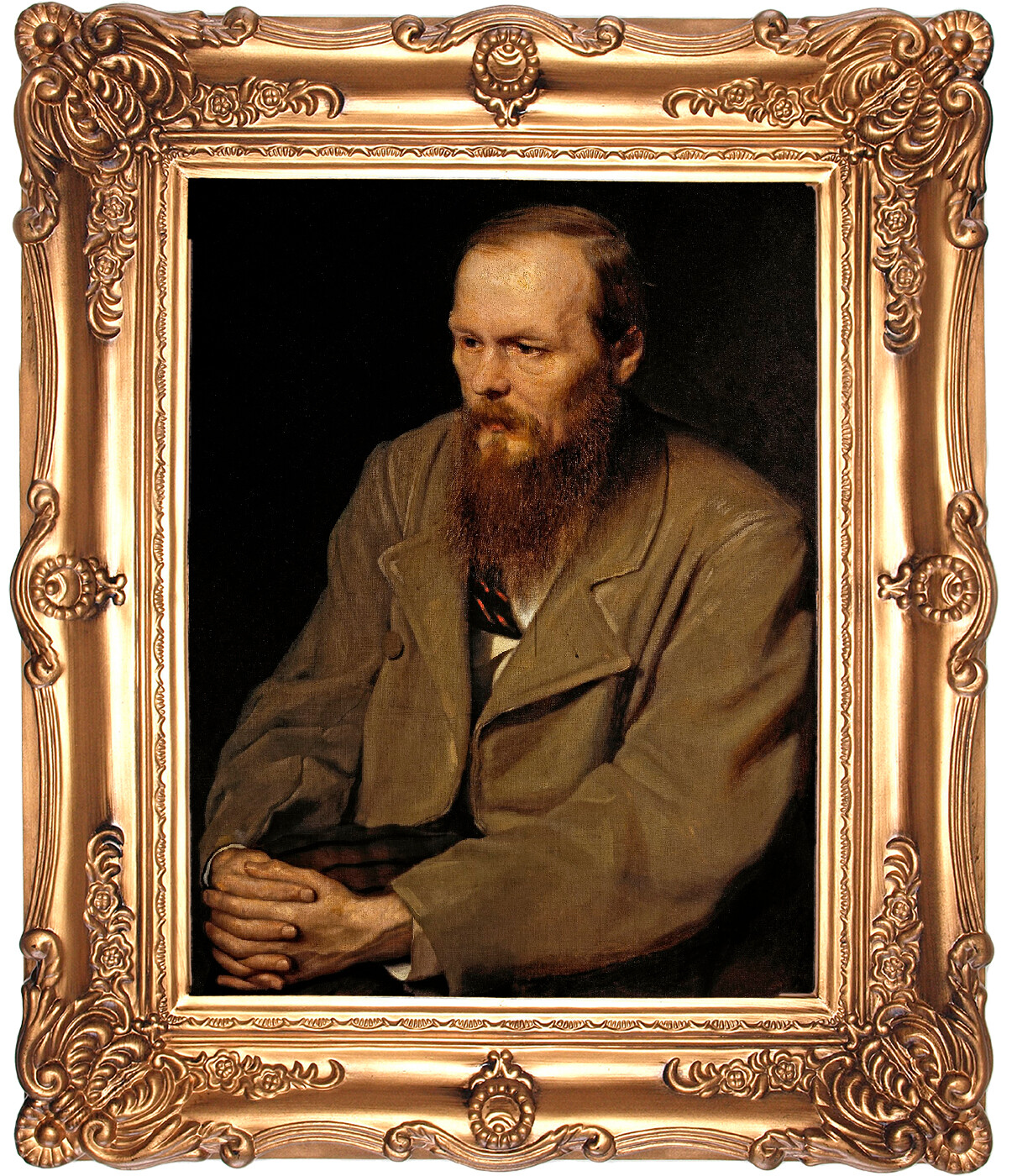
Vasily Perov. Portrait of Fyodor Dostoevsky, 1872
Tretyakov GalleryFyodr Dostoevsky had a dramatic life: at 28 years old, he was arrested for spreading banned books and sent to prison in Siberia. The experience of those hard days, he expressed later in his ‘The House of the Dead’ novel. And, after being released from prison, he became a very religious man, believing that only faith could save a person (the idea we see in many of his works).
Dostoevsky wrote five great novels that shook the world: ‘Crime and Punishment’, ‘Idiot’, ‘The Possessed’ (‘Devils’), ‘The Adolescent’ and ‘The Brothers Karamazov’. All of them have an exciting, frequently detective plot and a very deep psychological analysis of the characters and the motives behind their actions.
Dostoevsky was always interested in all the lower depths of the human soul, with all its sins and dark sides. And his characters are usually very miserable and even mad. His ‘Notes from the Underground’ brings such a person to the forefront.
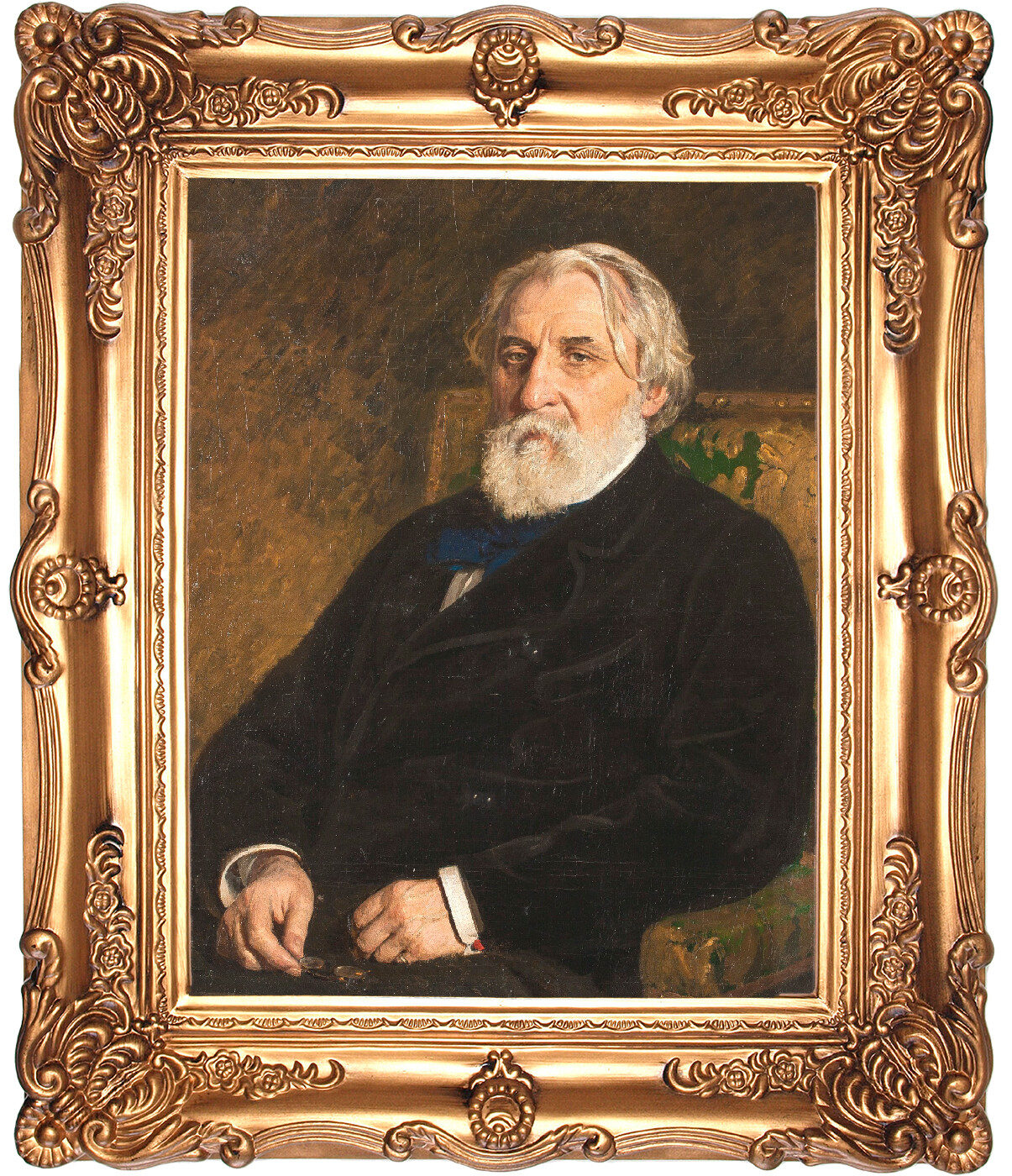
Ilya Repin. Portrait of Ivan Turgenev, 1874
Tretyakov GalleryIvan Turgenev created or expressed several important essences in his works. First of all, the so-called ‘Noble Nest’, a phrase that first appeared as a title of his novel ‘A Nest of the Gentry’ (a.k.a. ‘Home of the Gentry’). It’s the story of a countryside estate of a landlord, who has already lost most of the estate’s money. His children and family members fly away like chicks from a nest, but some guests, servants and random people would constantly visit and stay at the estate, creating a social life there. In fact, most of Turgenev’'s novels depict different noble “nests”. Now, the ‘noble nest’ has become an aphorism in the Russian language.
The second important problem that Turgenev managed to be the first to analyze was the problem of ‘Fathers and Sons’, as his most famous novel is titled. This eternal problem of the common misunderstanding of two generations is still absolutely relevant. Turgenev was also exploring a ‘superfluous’, new type of man, a nihilist, an atheist and a man who values intellect more than feelings and feels different from other people.
Finally, ‘the Turgenev girl’ is still a very widely known aphorism. In many of his novels, such as ‘Rudin’, ‘Asya’, and the two mentioned before, there is a young lady who seems to be weak and fragile. But, in fact, she always appears to be stronger and more moral and honest than men.
Living for a long time in Europe, Turgenev also contributed a lot to bringing Russian literature to foreign audiences and translating it into different languages.
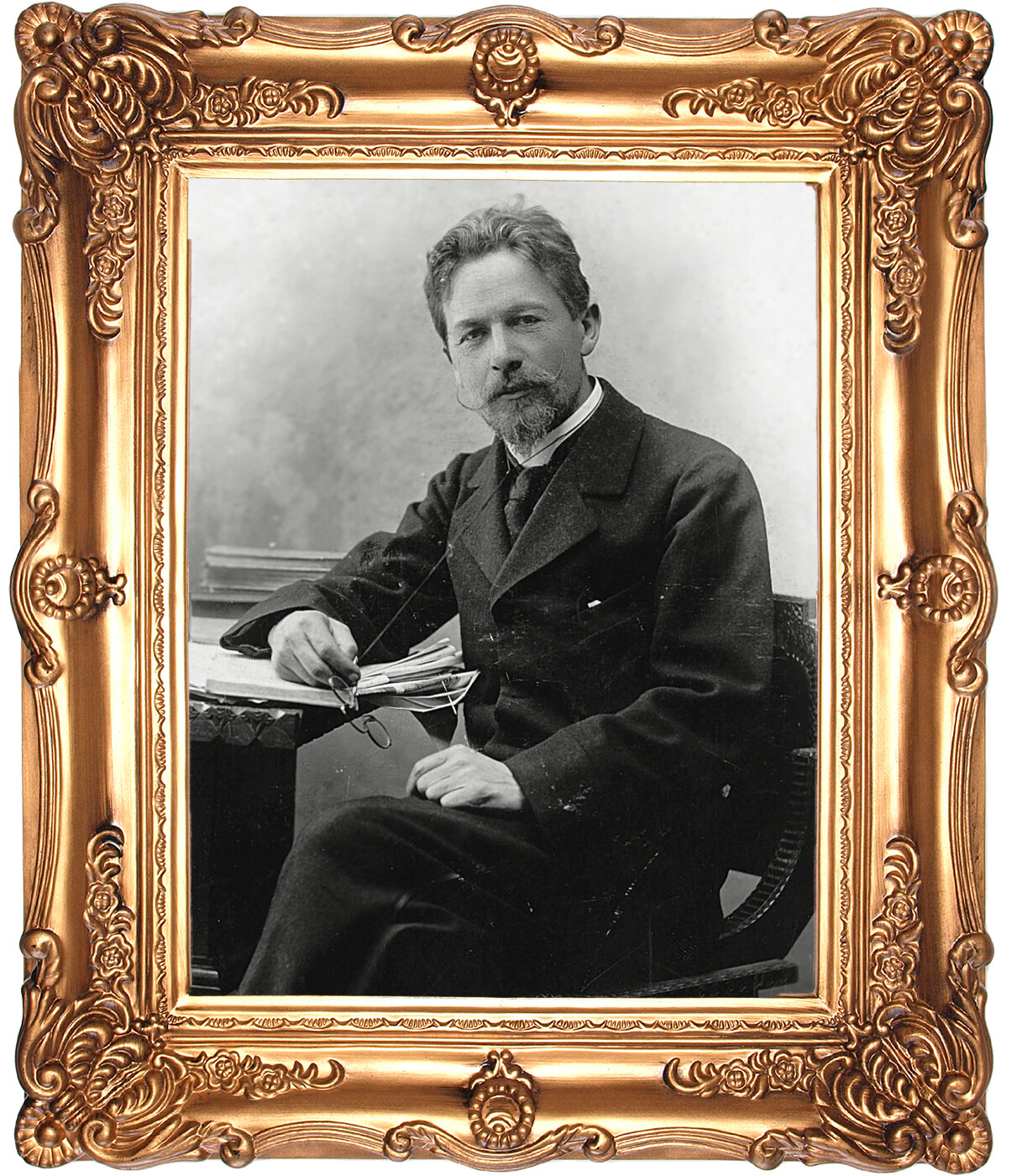
Anton Chekhov, 1889
Public domain“Brevity is the sister of talent” is Chekhov’s most famous aphorism. And he was a master of short stories, which are sometimes even more powerful than some big novels. Chekov was the first to focus not on overblown drama, but on everyday life. The characters in his stories often dissolve into routine and circumstance, displaying no aspirations of their own (Discover ten must-read short stories by Chekhov here).
At the same time, Chekhov was a brilliant playwright and is probably even best known for his theatrical plays staged around the world. He wrote about the fading of nobility as a class, while expressing the feeling that yesterday’s servants were becoming more adapted to real life than pampered aristocrats. And, somehow, he seemed to predict the Bolshevik Revolution or, at least, the coming of the new world, replacing the old one (Read more about Chekhov’s four main plays here).
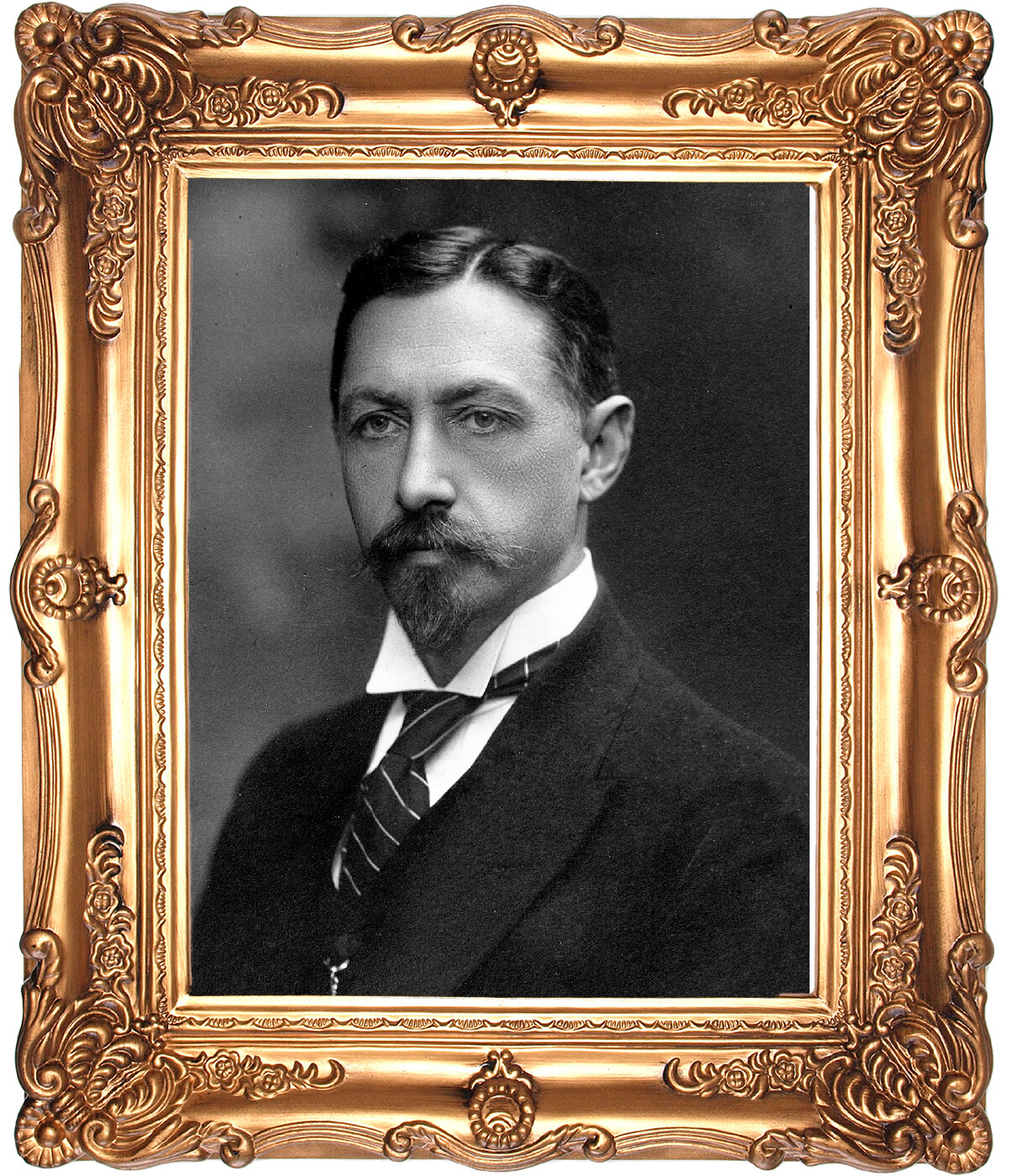
Ivan Bunin, 1900
Public domainBunin was the first Russian writer awarded with the Nobel Prize for Literature (1933). His main rival for the award at the time was Soviet writer Maxim Gorky and it was most likely a political decision by the Nobel committee to praise Bunin, who emigrated from Russia to France after the 1917 Bolshevik Revolution (The madness of this time and chaos of the Civil War was depicted in his autobiographical piece called ‘Cursed Days’).
The Swedish Academy noted his “following through and developing with chastity and artfulness the traditions of Russian classic prose”. So, in this sense, we can call Bunin the very last great Russian writer of the 19th century.
However, he went further than his very realistic predecessors. Bunin wasn’t deeply psychological, neither had he written the motives and the detailed plot. He used symbolism, half-tones and hints, letting a reader turn on their imagination. His masterpieces like ‘Mitya’s Love’ or ‘Dark Avenues’ are even erotic without actually describing anything realistically sexual. Bunin’s classical novella ‘The Gentleman from San Francisco’ depicts how even a very wealthy and respectful man is weak in front of fate and circumstances… and how useless his money is after his death.
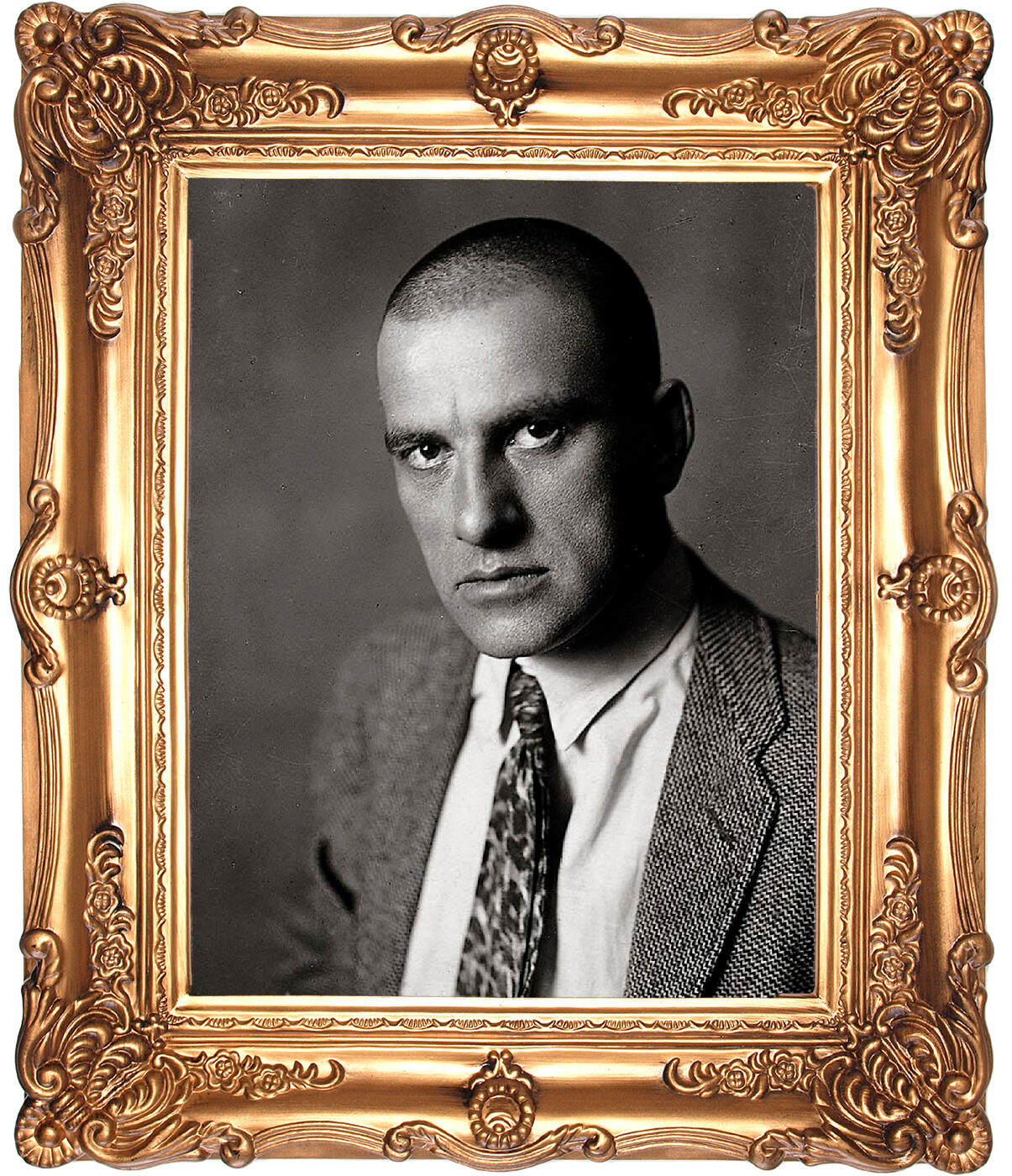
Vladimir Mayakovsky, 1920
Public domainThe early 20th century was an absolutely unique time for Russian poetry, giving birth to a whole generation of talented poets composing in different styles and manners (This was called the Silver Age). And Vladimir Mayakovsky was outstanding even in this environment. He was a revolutionary poet, who absolutely broke the old poetic “laws”, the old classical rhymes and rhythms. He masterfully played with the sentences and the poem’s structure and form.
Mayakovsky was a leading member of the futurist movement. He praised the Bolsheviks Revolution and embraced the rebellious spirit of the new age. He also contributed to propaganda, making up verses for posters and advertising.
He was a Soviet superstar, traveled on tour around the world (and even in the U.S., where, later, his daughter was born without him knowing about her). And his private life was a reflection of his open-minded lyrics, as he lived together with his muse Lilya Brik and her… husband Osip Brik (who was also Mayakovsky’s publisher). In 1930, Mayakovsky committed suicide under still not quite clear circumstances.
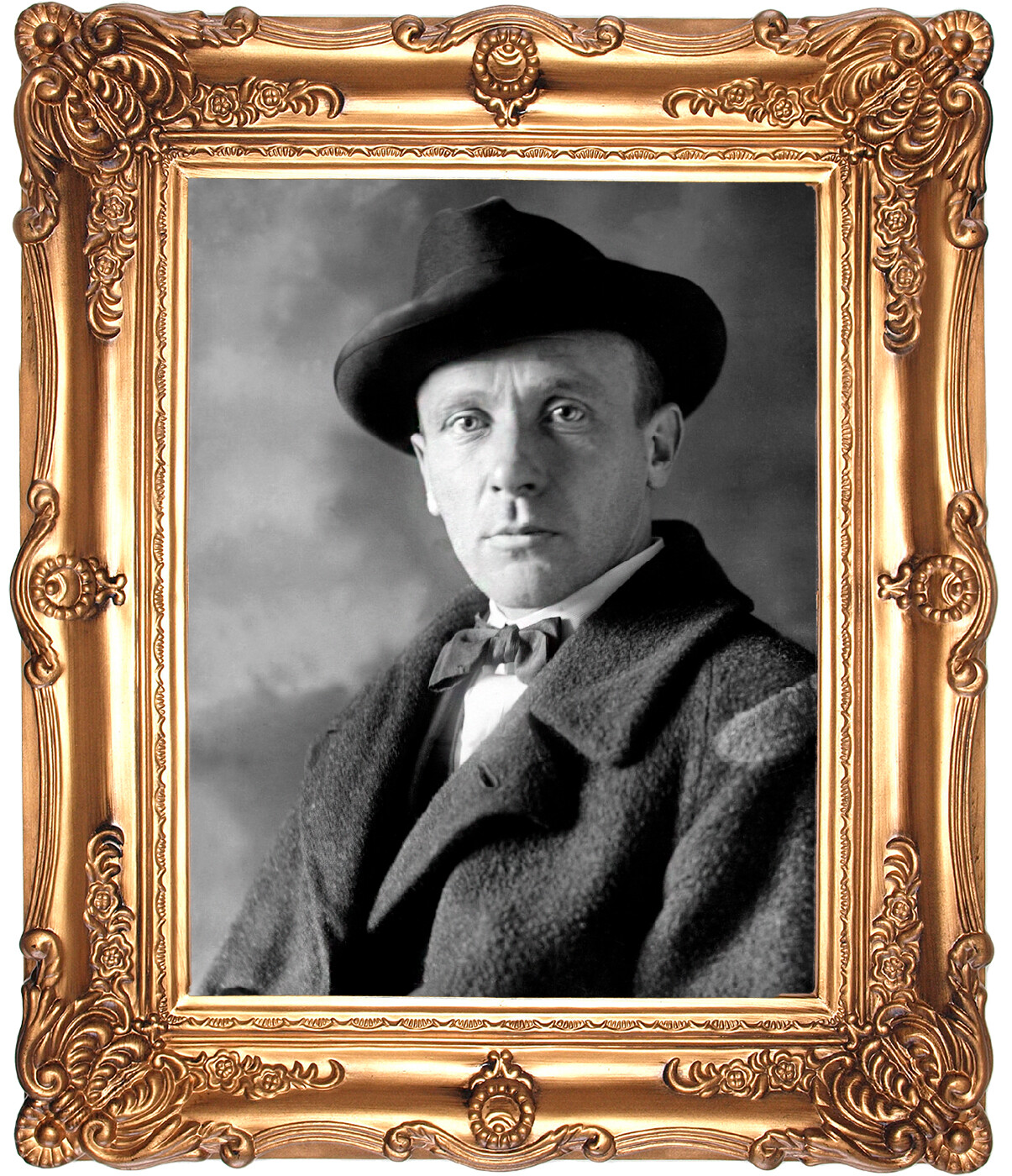
Mikhail Bulgakov, 1920s
Public domainMikhail Bulgakov is a writer of such a big and diversified talent that it’s sometimes hard to believe that all of his very different pieces were written by the same man (a doctor by occupation).
He showed writing talent and skills when he was a young doctor working in a remote provincial village during World War I, as he described his experience in ‘A Young Doctor's Notebook’. Later, he was an eyewitness to the most turbulent time – the Civil War in Russia – and reflected this chaotic nightmare and the dying of the old world in his novel ‘White Guard’. After that, he wrote semi-fantastical stories with a mixture of science, medicine and satire about Soviet reality (such as ‘Heart of a Dog’).
And, finally, the work of his entire life is ‘The Master and Margarita’, a novel of magical realism showing, on one hand, how the devil visited Soviet Moscow and, on the other, how Jesus spent the last days of his life… It’s believed that the female character becoming a witch and signing a contract with the devil had a real-life prototype; it was Bulgakov’s wife herself who allegedly secretly worked for the Soviet intelligence agency.
Read more about Mikhail Bulgakov here.

Boris Pasternak, 1959
Public domainBoris Pasternak was most known throughout his life as a poet and a poetry translator. But, then he wrote ‘Doctor Zhivago’, a novel that changed his fate and the world’s literature. It was banned in the USSR and first published in Italy (with the CIA involved in using it as a propaganda tool against the Soviet state). Pasternak received a Nobel Prize in literature for this novel, but he was bullied so much in the USSR that he soon died… ‘Didn’t read Pasternak, but condemn him’ – a phrase from that time that became an idiom for the idiocy of the situation.
Formally, the book depicted the Civil War, but, deep down, it was a novel about human beings, about love and death, the meaning of life and the universe itself. And absolutely inappropriate in Soviet times, as the novel does not put the Bolsheviks in a good light and, instead, shows how barbaric they acted and how they ruined many lives.
The novel was first officially published in the USSR in 1988 and is now included in all the school and university reading lists and is confirmed as one of the strongest novels of the 20th century.
***
If you are offended by the fact we didn’t mention a single female author here, don’t be! We have a list of the very first female authors, of main women writers of the 20th century, and of the must-read contemporaries!
Dear readers,
Our website and social media accounts are under threat of being restricted or banned, due to the current circumstances. So, to keep up with our latest content, simply do the following:
If using any of Russia Beyond's content, partly or in full, always provide an active hyperlink to the original material.
Subscribe
to our newsletter!
Get the week's best stories straight to your inbox